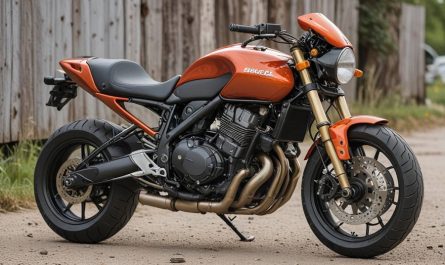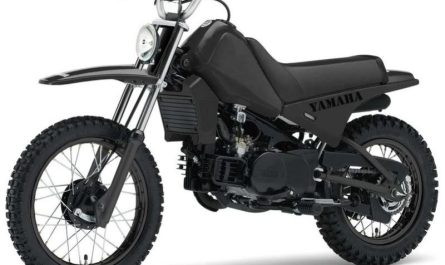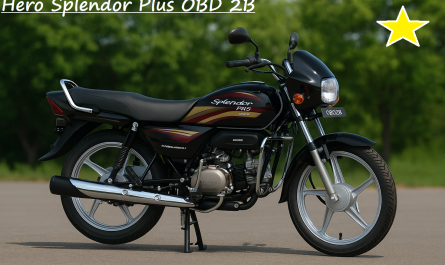Imagine the 1980s in India, a time when the streets buzzed with the unmistakable ring-ding-ding of a two-stroke engine, a sound that turned heads and quickened pulses. The Yamaha RX 100 wasn’t just a motorcycle; it was a cultural icon, a symbol of freedom, rebellion, and raw power. For many, it was love at first ride, a machine that carved its name into the hearts of riders and the annals of Indian motorcycling history. In this article, we dive deep into the Yamaha RX 100, exploring its legacy, performance, and the buzz around its potential comeback in India. Whether you’re a die-hard enthusiast, a vintage collector, or just curious about this legend, buckle up for a nostalgic ride through the world of the RX 100.
History of the Yamaha RX 100
The Birth of a Legend
In November 1985, Yamaha, in collaboration with the Escorts Group, unleashed the RX 100 on Indian roads. It wasn’t just another bike; it was a game-changer. At a time when fuel-efficient but sluggish commuter bikes dominated the market, the RX 100 arrived like a bolt of lightning. Built on the foundation of Yamaha’s RX-S variant, it was assembled in India using knock-down kits from Japan, blending Japanese engineering with Indian spirit.
Why It Stood Out
The RX 100 wasn’t Yamaha’s first attempt at cracking the Indian market. Their earlier Rajdoot 350 had stumbled, but the RX 100 learned from its predecessor’s mistakes. Inspired by the success of rivals like Suzuki’s AX 100, Yamaha crafted a 100cc motorcycle that combined lightweight design with explosive performance. It wasn’t just a bike; it was a statement.
- Launch Date: November 1985
- Production Run: 1985–1996
- Collaboration: Yamaha Japan and Escorts Group
- Original Colors: Peacock Blue, Cherry Red, Maroon, Metallic Black, New Black
A Motorcycle Ahead of Its Time
The RX 100 was a revelation. Its compact frame and potent two-stroke engine made it a favorite for young riders, racers, and anyone craving a thrill. From college campuses to drag strips, the RX 100 became a symbol of speed and style, earning a cult following that endures to this day.
Design & Build Quality
Minimalist Yet Timeless
The Yamaha RX 100 was a masterclass in simplicity. Its design was no-nonsense, yet it oozed charm. Picture a classic round headlamp, a teardrop-shaped fuel tank, and chrome-finished fenders that gleamed under the sun. The bike’s compact dimensions—1965 mm long, 740 mm wide, and 1040 mm tall—made it as nimble as a cheetah darting through traffic.
Key Design Features
- Single-Piece Seat: Comfortable for city rides, though not ideal for long journeys.
- Chrome Accents: Gave it a premium, retro vibe that still turns heads.
- Analog Dials: Simple, functional, and oh-so-80s.
- Lightweight Frame: At just 103 kg, it was a featherweight champion.
Build That Lasted
The RX 100 was built like a tank, but a light one. Its sturdy steel tubing and reliable components meant it could handle India’s rough roads with ease. Owners often speak of bikes from the 80s still running strong, a testament to Yamaha’s engineering prowess. The Indian-market models used drum brakes (unlike the disc brakes on Japanese versions), but they were more than adequate for the time.
Performance Specs
The Heart of the Beast
At the core of the Yamaha RX 100 was its 98cc, air-cooled, single-cylinder, two-stroke engine. This little powerhouse churned out 11 PS at 7500 rpm and 10.39 Nm of torque at 6500 rpm, paired with a 4-speed manual gearbox. While these numbers might seem modest today, the RX 100’s power-to-weight ratio was unmatched in its class.
Yamaha RX 100 Top Speed
The RX 100 could hit a top speed of around 100–110 km/h, a feat that felt like warp speed for a 100cc bike in the 80s. Tuned versions, often modified with expansion chambers or race pistons, could push even higher, making it a darling of drag racers.
RX 100 Mileage
Fuel efficiency wasn’t the RX 100’s strongest suit. Owners report mileage between 35–40 kmpl, though some claim up to 52 kmpl at conservative speeds (35–40 km/h). The bike’s 10.5-liter fuel tank ensured decent range, but if you rode it like you stole it, expect frequent fuel stops.
Technical Highlights
- Engine: 98cc, two-stroke, air-cooled, single-cylinder
- Power: 11 PS @ 7500 rpm
- Torque: 10.39 Nm @ 6500 rpm
- Transmission: 4-speed manual
- Weight: 103 kg
- Fuel Tank: 10.5 liters
Riding Experience
A Symphony on Wheels
Riding the Yamaha RX 100 was like playing a rock anthem. The engine’s signature “ring-ding-ding” exhaust note was music to any biker’s ears, a sound that could wake a sleepy village or announce your arrival at a college gate. The lightweight frame and short handlebar made it a dream to maneuver, whether weaving through city traffic or tackling winding roads.
What Riders Loved
- Instant Throttle Response: The two-stroke engine delivered power the moment you twisted the throttle.
- Nimble Handling: Perfect for darting through crowded streets or leaning into corners.
- Iconic Sound: That exhaust note was a badge of honor, unmistakable and unforgettable.
The Downsides
The RX 100 wasn’t perfect. Long rides could be tiring due to its flat seat and lack of modern suspension. The absence of an electric start meant kick-starting was the only way to fire it up, which could be a chore. And let’s not forget the two-stroke engine’s thirst for 2T oil, which added to maintenance costs.
Why It Was Discontinued
Emission Norms Changed the Game
The RX 100’s reign ended in March 1996, not because it lost its charm, but because of stricter emission regulations in India. Two-stroke engines, while powerful, were notorious for high emissions and poor fuel efficiency. As India moved toward cleaner four-stroke engines, the RX 100 became a casualty of progress. Yamaha tried to keep the RX legacy alive with models like the RXG, RX-Z, and RX 135, but none captured the original’s magic.
A Shift in Market Trends
By the late 1990s, fuel efficiency and low maintenance became priorities for Indian buyers. Four-stroke bikes like the Hero Honda Splendor gained traction, and Yamaha shifted focus to models like the RX Saluto, which lacked the RX 100’s raw appeal. The era of two-stroke legends was fading, but the RX 100’s legacy was far from over.
The Cult Status and Fan Following
More Than a Bike
The Yamaha RX 100 wasn’t just a motorcycle; it was a way of life. From Bollywood movies to college campuses, it was the ride of choice for rebels, racers, and romantics. Owners often gave their bikes names like “Laxmi” or “Yamraj,” treating them like family members. Even today, RX 100 fan clubs thrive across India, with enthusiasts restoring and showcasing their prized machines.
Why It’s Still Loved
- Nostalgia Factor: For many, it’s a reminder of youth, freedom, and simpler times.
- Unique Sound: The two-stroke rumble is a siren call for enthusiasts.
- Customizability: From paint jobs to performance mods, the RX 100 is a canvas for creativity.
- Durability: Well-maintained RX 100s from the 80s still run like a dream.
Stories from the Road
One owner on a biking forum shared how his 1989 RX 100, passed down from his father, still draws crowds at local bike meets. Another recounted racing his modified RX 100 to a quarter-mile in 14 seconds—a respectable feat for a 100cc bike. These stories highlight why the RX 100 remains a legend.
Comparison with Modern Bikes
How It Stacks Up
The RX 100 was a giant in its era, but how does it fare against today’s 100–150cc bikes? Let’s compare it to modern contenders like the Honda SP 125 and Bajaj Pulsar 125.
| Feature | Yamaha RX 100 (1985–1996) | Honda SP 125 (2025) | Bajaj Pulsar 125 (2025) |
|---|---|---|---|
| Engine | 98cc, 2-stroke | 124cc, 4-stroke | 124.4cc, 4-stroke |
| Power | 11 PS @ 7500 rpm | 10.7 PS @ 7500 rpm | 11.8 PS @ 8500 rpm |
| Top Speed | 100–110 km/h | ~100 km/h | ~105 km/h |
| Mileage | 35–40 kmpl | ~60 kmpl | ~50 kmpl |
| Weight | 103 kg | 116 kg | 140 kg |
| Brakes | Drum (front & rear) | Disc/Drum | Disc/Drum |
| Price (Est.) | ₹1–1.5 lakh (used) | ₹86,000–90,000 | ₹82,000–94,000 |
What Modern Bikes Offer
- Fuel Efficiency: Modern four-stroke engines deliver better mileage (50–60 kmpl vs. RX 100’s 35–40 kmpl).
- Features: Disc brakes, ABS, digital displays, and electric start are standard on today’s bikes.
- Emissions: Four-stroke engines are cleaner, aligning with BS6 norms.
Why RX 100 Still Wins Hearts
Despite lacking modern features, the RX 100’s raw power, lightweight design, and iconic sound give it an edge in the “fun” department. It’s less about practicality and more about the thrill of riding a legend.
Is Yamaha RX 100 Coming Back in India?
The Rumors and Reality
The idea of an RX 100 comeback in India has fans buzzing. In 2023, Yamaha India President Eishin Chihana hinted at reviving the RX name with a modern avatar, sparking excitement. However, in 2024, Motofumi Shitara, Yamaha’s new chairman, clarified that the focus is on premium bikes above 150cc, casting doubt on an imminent relaunch. Still, speculation persists about a launch by December 2026 or January 2027.
What a Modern RX 100 Could Look Like
If the RX 100 returns, expect a blend of retro charm and modern tech:
- Engine: A 125–225cc four-stroke, fuel-injected engine to meet BS6 norms.
- Features: LED headlights, digital console, ABS, and disc brakes.
- Design: Classic round headlamp, teardrop tank, and chrome accents to retain the retro vibe.
- Price: ₹1.25–1.50 lakh (ex-showroom).
Challenges Ahead
Recreating the RX 100’s two-stroke magic with a four-stroke engine is no easy task. Fans want the same punchy performance and iconic sound, but emission norms make this tricky. Yamaha’s challenge is to balance nostalgia with modern expectations, a feat that could make or break the comeback.
Maintenance Tips for RX 100 Owners
Owning a Yamaha RX 100 is like caring for a vintage vinyl record—it requires love and attention. Here’s how to keep your RX 100 roaring:
- Two-Stroke Oil: Always use high-quality 2T oil mixed with petrol to ensure smooth engine performance.
- Carburetor Cleaning: Clean the carburetor every 6 months to prevent clogs and maintain throttle response.
- Chain Maintenance: Lubricate the chain regularly to reduce wear and ensure smooth power delivery.
- Rust Prevention: Store the bike in a dry place and apply anti-rust spray to chrome parts.
- Expert Mechanics: Work with mechanics experienced in two-stroke engines, as parts can be hard to find.
Common Issues to Watch
- Engine Overheating: Avoid prolonged high-speed runs without breaks.
- Worn Gears: Heavy-handed gear shifts can damage the gearbox.
- Spare Parts: Sourcing authentic parts can be a challenge, so stock up when possible.

Common Modifications & Customizations
The RX 100 is a modifier’s dream. Enthusiasts have turned it into everything from café racers to scramblers. Popular mods include:
- Expansion Chambers: Boosts performance and enhances the exhaust note.
- Disc Brakes: Upgrading from drum brakes for better stopping power.
- Race Pistons: Increases power output for drag racing.
- Custom Paint: Retro-inspired liveries or bold new colors to stand out.
- Alloy Wheels: Lighter and more stylish than stock wheels.
A Word of Caution
While modifications can enhance performance, they may compromise reliability or street legality. Always check local regulations before modding your RX 100.
Where to Buy RX 100 Today (India/Global)
India
The RX 100 is no longer in production, so your best bet is the used market:
- Online Portals: Platforms like OLX, Quikr, and BikeDekho list used RX 100s, with prices ranging from ₹50,000 to ₹1.5 lakh depending on condition.
- Vintage Bike Dealers: Cities like Chennai and Delhi have dealers specializing in Yamaha RX models.
- Bike Meets: Connect with RX 100 fan clubs or attend vintage bike rallies to find well-maintained units.
Global Market
Globally, the RX 100 is rare, as it was primarily built for India. However, collectors in countries like the UK or US may find imported units or similar RX-S models from Japan. Check auction sites like eBay or contact Yamaha enthusiast groups for leads.
Buyer Tips
- Check Condition: Look for rust, engine health, and original parts.
- Verify Papers: Ensure the bike has valid registration and no legal issues.
- Test Ride: Confirm the engine’s performance and gear shifts before buying.
Pros and Cons Summary
Pros
- Iconic design with timeless appeal
- Explosive performance for a 100cc bike
- Lightweight and nimble handling
- Huge customization potential
- Strong resale value in the vintage market
Cons
- Poor fuel efficiency (35–40 kmpl)
- No modern features like disc brakes or electric start
- High maintenance costs for two-stroke engine
- Spare parts are hard to find
- Not ideal for long-distance rides
FAQs
1. What is the Yamaha RX 100 top speed?
The Yamaha RX 100 can reach a top speed of 100–110 km/h in stock condition. Modified versions with expansion chambers or tuned engines can push slightly higher, though this may affect reliability.
2. What is the RX 100 mileage?
The RX 100 delivers mileage of 35–40 kmpl under normal riding conditions. Riding conservatively at 35–40 km/h can yield up to 52 kmpl, but aggressive riding drops it significantly.
3. Is the Yamaha RX 100 coming back in India?
Rumors suggest a possible RX 100 comeback by December 2026 or January 2027, featuring a 125–225cc four-stroke engine, modern features like ABS, and a retro design. However, Yamaha’s focus on premium bikes above 150cc has raised doubts about an imminent relaunch.
4. Why was the Yamaha RX 100 discontinued?
The RX 100 was discontinued in March 1996 due to stricter emission norms in India, which favored cleaner four-stroke engines. Its two-stroke engine couldn’t meet the new regulations, leading Yamaha to phase it out.
5. Where can I buy a Yamaha RX 100 today?
In India, used RX 100s are available on platforms like OLX, Quikr, and BikeDekho, with prices ranging from ₹50,000 to ₹1.5 lakh. Globally, they’re rare but can be found through collectors or auction sites like eBay. Always verify the bike’s condition and paperwork.
6. Is the RX 100 good for long rides?
The RX 100 is better suited for city rides and short trips due to its flat seat and basic suspension. Long rides can be tiring, and the two-stroke engine may overheat if pushed hard for extended periods.
Conclusion: A Legend That Lives On
The Yamaha RX 100 is more than a motorcycle it’s a time machine. It takes you back to an era when the open road was an adventure, and the roar of a two-stroke engine was the soundtrack of youth. Its blend of raw power, minimalist design, and unmatched charisma made it a legend, and its cult following proves that old is indeed gold. Whether you’re chasing nostalgia or dreaming of a modern RX 100 comeback in India, this bike’s legacy is undeniable. As we await news of its potential revival, one thing is clear: the RX 100’s roar will echo in the hearts of riders for generations to come. So, tell me, have you ever ridden an RX 100, or is it still on your bucket list?


